
Since 2008, NASA’s two TWINS spacecraft have been providing a sterescopic view of the ring current — a hula hoop of charged particles that encircles Earth. Credit: J. Goldstein/SWRI
Since their launch in 2008, the two Wide-angle Imaging Neutral-atom Spectrometers (TWINS) satellites have been providing scientists with data on Earth’s magnetosphere and the first and only stereo view of the ring current.
Surrounding Earth is a dynamic region called the magnetosphere. The region is governed by magnetic and electric forces, incoming energy and material from the sun, and a vast zoo of waves and processes unlike what is normally experienced in Earth-bound physics. Nestled inside this constantly changing magnetic bubble lies a donut of charged particles generally aligned with Earth’s equator. Known as the ring current, its waxing and waning is a crucial part of the space weather surrounding our planet, able to induce magnetic fluctuations on the ground as well as to transmit disruptive surface charges onto spacecraft.
On June 15, 2008, a new set of instruments began stereoscopic imaging of this mysterious region. Called Two Wide-angle Imaging Neutral-atom Spectrometers or TWINS, these satellites orbit in widely separated planes to provide the first and only stereo view of the ring current. TWINS maps the energetic neutral atoms that shoot away from the ring current when created by ion collisions.
In five years of operation, the TWINS maps have provided three-dimensional images and global characterization of this region. The observatories track how the magnetosphere responds to space weather storms, characterize global information such as temperature and shape of various structures within the magnetosphere, and improve models of the magnetosphere that can be used to simulate a vast array of events.
“With two satellites, with two sets of simultaneous images we can see things that are entirely new,” said Mei-Ching Fok, the project scientist for TWINS at NASA’s Goddard Space Flight Center in Greenbelt, Maryland. “This is the first ever stereoscopic energetic neutral atom mission, and it’s changed the way we understand the ring current.”
Each spacecraft is in a highly elliptical orbit called a Molniya orbit, during which the spacecraft spends most of its time around 20,000 miles (32,000 kilometers) above Earth, where it gets a great view of the magnetosphere. Initially launched for a two-year mission, TWINS was formally extended in 2010 for three more years, with another multi-year extension pending. Over that time, TWINS has worked hand in hand with other NASA missions that provide information about Earth’s magnetosphere.
“We’ve done some fantastic new research in the last five years,” said David McComas, the principal investigator for TWINS at the Southwest Research Institute in San Antonio, Texas. “As a mission of opportunity, it is a very inexpensive mission and it continues to return incredible science.”
TWINS science is based on two instruments that can track neutral atoms. The first is a neutral atom imager that records the atoms that naturally stream away when a neutral atom collides with an ion. This allows the instrument to map the original ions from far away – as if it could see atoms the way we see light – instead of only collecting data from the areas of space it passes through.
“Over the course of the last 20 years a completely new technique evolved so we can observe charged particles, such as those in the ring current, remotely,” said McComas. “The charged particles sometimes collide with a slow-moving neutral particle, in this case from a population of neutrals from Earth’s highly extended atmosphere, the geocorona.”
When this happens, an electron hops from the slow neutral atom to the fast ion, so now the former becomes charged, and the latter neutral. That new neutral speeds off in a straight direction, unfazed by the magnetic field lines around Earth that guide and control the motion of charged particles. TWINS collects such fast neutral particles and from that data scientists can work backward to map out the location and movement of the original ions.
The other instrument on TWINS is a Lyman alpha detector, which can measure the density of hydrogen from afar, and in this case, observe the hydrogen cloud around Earth, the geocorona.
Most importantly, these instruments exist on both of the TWINS spacecraft. Much of the successful research in the last five years relies on the ability to watch these neutrals from two viewpoints, allowing scientists to analyze not only the speed and number of particles, but also to determine the angles at which the particles left their original collisions. The stereo vision contributed to the detailed perspectives on how the magnetosphere reacts to space weather storms: both those due to the impact of a coronal mass ejection that traveled from the sun toward Earth and due to an incoming twist in the solar wind known as a co-rotating interaction region. TWINS has also revealed that the pitch angle at which the ions travel around Earth is different on each side of the planet. Such information helps scientists determine whether the ions are more likely to escape from the ring current out into space or to ultimately funnel down toward Earth.
“TWINS is a stereo mission, providing the first observations of the neutral atoms from two vantage points, but two spacecraft give us another advantage,” said Natalia Buzulukova, a magnetospheric scientist at Goddard who works with TWINS data. “Two spacecraft provide continuous coverage of the ring current, as one set of instruments always has a view.”
Because the spacecraft orbits are not in sync they provide stereoscopic imaging for a few hours each day, but there is always at least one spacecraft keeping tabs on how events are unfolding. Prior to TWINS, a spacecraft might see a tantalizing process taking place in the ring current for only a short while before its orbit took it out of view. The event might well have finished before the spacecraft came back around for its second look.
Such continuity has proved useful to determine what governs whether particles in the ring current will precipitate downward toward Earth as well as to provide a global temperature map of the magnetic tail trailing behind Earth, the magnetotail. Such a map had only ever previously been inferred from models and statistical analysis, never from a comprehensive data set of what was actually observed.
The Lyman-alpha instrument has been used in two ways. For one thing, it quantifies the geocorona in order to better understand how it affects the collisions in the ring current. It also has taught us more about the geocorona itself. Previously, researchers believed it to be a fairly simple sphere around Earth. The two TWINS instruments have shown how asymmetric it is, changing with the solar cycle, seasons, and even the hours of the day.
A final important feature of this fire hose of TWINS data is how much it helps improve computer simulations of the ring current and the rest of the magnetosphere. With accurate computer models, scientists can better predict how the magnetosphere will react to any given space weather event.
“We get two really unique things with two spacecraft: stereo imaging and continuous coverage. Together the observations we get are fantastic,” said McComas. “It’s an incredibly powerful combination of tools.”
TWINS is an Explorer Mission of Opportunity. Southwest Research Institute leads TWINS with teams of national and international partners. Goddard manages the Explorers Program for NASA’s Science Mission Directorate in Washington, D.C.
For more information about TWINS science and mission, visit: http://science.nasa.gov/missions/twins/



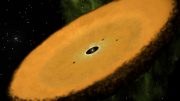
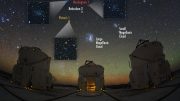

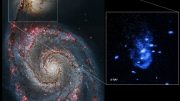
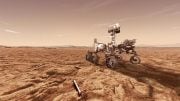
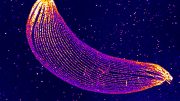
Be the first to comment on "NASA’s TWINS Provide Continuous Coverage of the Ring Current"